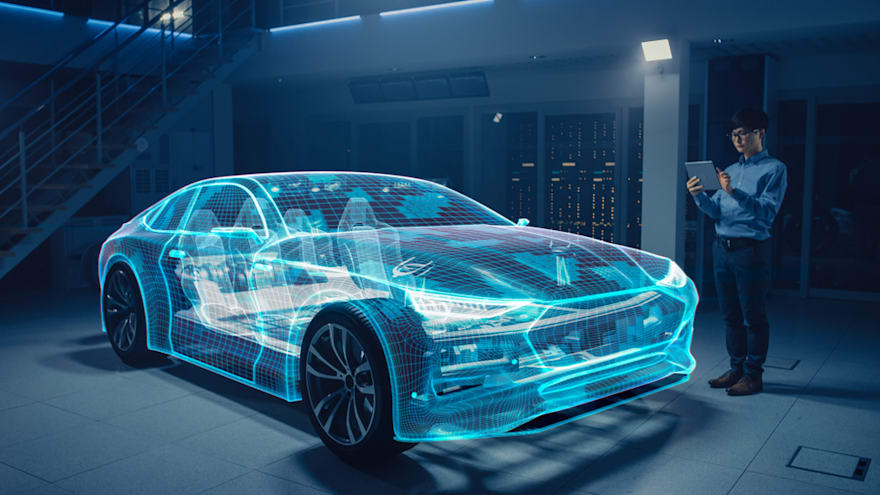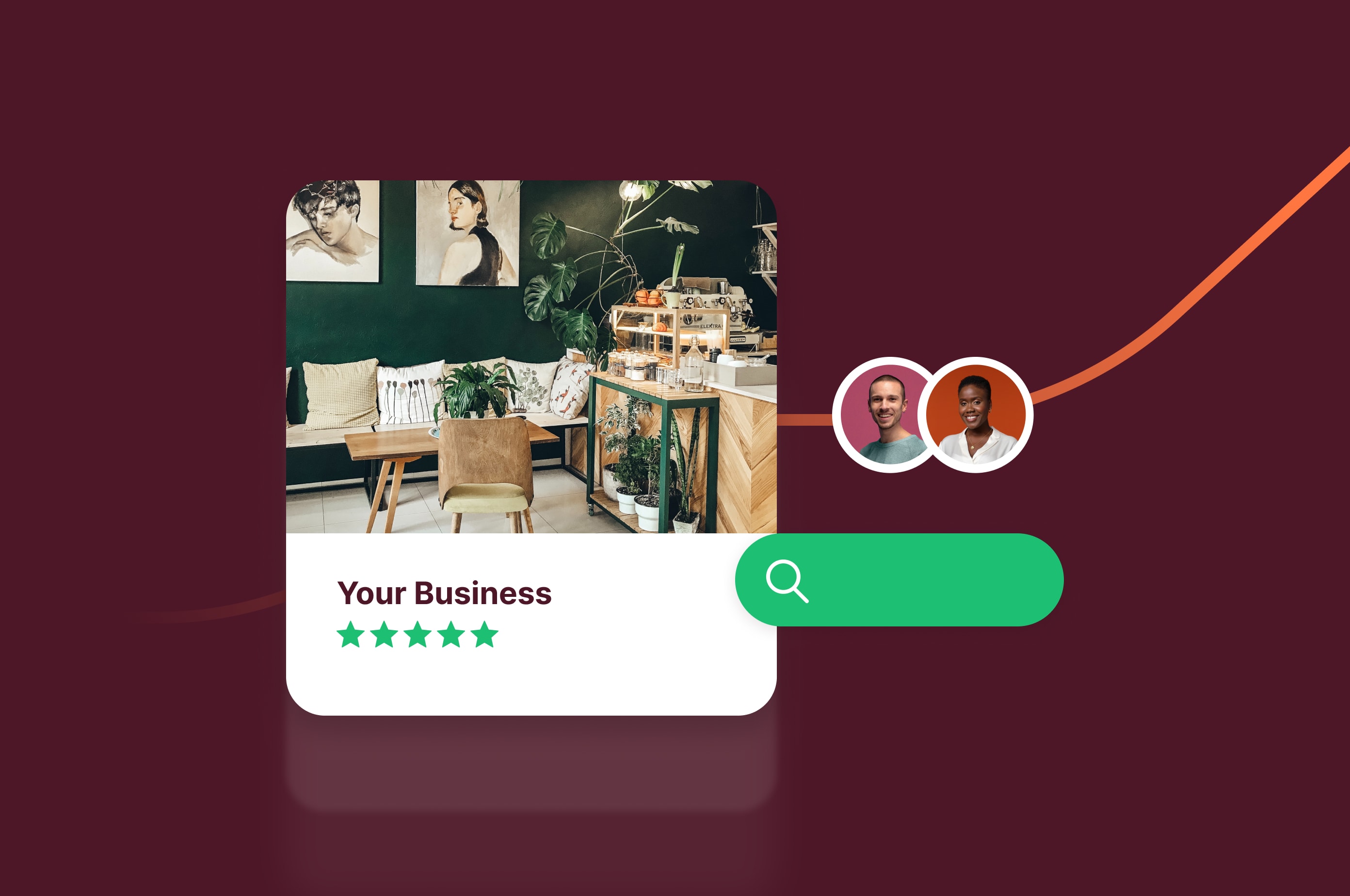How To Design A Car Wrap
Whether you are an experienced designer or someone new to the industry, creating car wrap designs can be a daunting process. From getting the right template file for the vehicle, through to the final print — it really is quite the journey.
 November 10, 2022
November 10, 2022 6 minute reading
6 minute reading
Whether you are an experienced designer or someone new to the industry, creating car wrap designs can be a daunting process. From getting the right template file for the vehicle, through to the final print — it really is quite the journey.
Custom car wrap design doesn’t need to be stressful or time-consuming. And, it doesn’t need to cost any more than it should. With the right tools and creativity, you can create a unique design for any vehicle type.
In this guide, we’ll outline the steps involved. Plus, we’ll teach you how to design cool car wraps for either a client or yourself.
What is a car wrap
What are car wraps? Car wraps are a popular design product used by businesses, brands, or for personal use.
Car wrap designs are printed on large vinyl stickers and applied to the car’s surface. They can be wrapped around the entire vehicle or applied separately to each side.
As a one-off purchase, the car wrap ensures any business is making the most of their vehicle’s space to advertise, effectively turning the vehicle into a mobile billboard. In the US, there are 286.9 million cars driving on the road, so this is a smart way to promote a brand.
Car wraps can be better than paint because they aren’t permanent and are easy to maintain. They act as a barrier for the paint, protecting the car from UV sun damage, chips, abrasions, and minor scratches. Car wraps retain the resale value as the original manufacturer’s paintwork is maintained.
You can apply car wraps to any vehicle, including smaller cars, vans, buses, or trucks.
The cost to supply and install a car wrap will depend on a range of factors such as the size of the car and the complexity of the design.
Standard car wrap prices for a small vehicle typically start at $3,000, with larger vehicles costing upwards of $5,000. It’s important to remember the initial outlay is an investment adding value to both the vehicle and the business.
The complexity of a car wrap design can vary. For example, you could have a simple slogan or a complete package with a logo, background, and phone number.
How do you design a car wrap
Now sure where to start? Let’s break down the design process.
1. Do your research
Wrap printing can be expensive, so you want to get it right.
First, do your research and know your colors. Colors can be brand specific, but your options can depend on the final product.
How many shades do you want? If you’re looking for a simple monotone (one-color) design, then a decal is what you need. However, if you want something that’s detailed and with a selection of colors, it’ll be a vinyl sticker.
Some designers create their first designs in template files, while others prefer to use Photoshop. The template is essentially the blueprint for the car. It's important to have an accurate template file so that you can create a design that fits the vehicle's unique specifications.
The client may give you a template, or they may need to purchase one for you. Please note, not all purchased templates will be 100% accurate. There may be slight differences in some surface areas.
You'll also need high-resolution photos of the vehicle, and you can ask the client to provide these. Photos should be taken from different angles, including the front back, and sides of the car. Even similar makes and models can still have subtle differences and slight variations that'll impact the result.
Ultimately, you'll need to create a mock-up. Manage the client’s expectations by showing them a realistic version of the design. You can do this by dropping the design onto a photo of the vehicle, as it'll help them visualize how the final graphics will look.
You don’t need to be proficient at using Photoshop because there are plenty of vehicle wrap tutorials to support all skill levels.
2. Choose your program
The right program will be something you feel comfortable with. Here are a few solutions:
Adobe Illustrator
If you’re not sure, try Adobe Illustrator. Graphic designers commonly use Illustrator to create vector graphics. Vector images and graphics are made of points, lines, shapes, and curves based on mathematical formulas rather than a set amount of pixels.
This means you can scale the graphics up or down while maintaining image quality. Because cars have a large printing surface, this function can be useful.
Vector templates are readily available online. You’ll need to source your template for the specific make and model as an Adobe Illustrator file (.ai).
Adobe Photoshop
Photoshop, on the other hand, is photo-editing software. It’s a rater-based program, so it works in pixels as opposed to points, lines, and shapes.
While we recommend Illustrator for your template, Photoshop can be useful for showing a client a photo of the vehicle with your graphics.
Adobe InDesign
Alternatively, if your image is mostly text, then you need something that can handle text editing. In this case, we recommend Adobe InDesign.
It comes with an extensive choice of typography from the world’s top foundries and imagery from Adobe Stock.
CorelDRAW
CorelDRAW Graphics Suite lets you add your own measurements. This can be an option if the car is unique and you can’t find the right template.
The program you choose should be compatible with the printer. If a printing company has to make edits or changes, they’ll need to be able to open your document. Most printers prefer to use Adobe but will accept both PSD and AI files.
3. Brainstorm your design
Gather inspiration for the design by creating a mood board of specific colors, text, images, and anything that could fit your theme.
If you’re working with a client, we recommend you write a brief. There may be an existing logo and colors that need to be in the design mix.
There may also be expectations from the client or constraints to consider. For example, your client may have a particular font they wish to use.
Choosing colors is a big decision. There are more than 2000 different car wrap colors that can change the look of the vehicle. Plus, vehicle wrap colors come in different types including gloss, gloss metallic, matte, matte metallic, satin, super gloss, texture, special effects, and chrome.
There are plenty of innovative car wrap ideas and design galleries available across the internet. Pinterest is a good place to start.
Look at photos of other cars to see what works and what doesn’t. Remember, the form should always follow function. The car wrap design needs to be easy to read while the vehicle is in motion. If the message can’t be seen when the car is traveling at 60mph, then the design doesn’t function. The idea is to communicate the message in the shortest space of time.
A design with simple aesthetics and color will stand the test of time.
4. See how it looks
Before you slap your designs onto the template, you should first experiment with the photo of the car that you got earlier. Play with different colors and positions to see how it could look in real life.
If you like, you can use a car color change application. You can visit the Apple App Store or Google Play Store to download the app of your choice.
Then, select the vehicle in the app library (availability will depend on the app) and apply the new paint color—select preview to view.
Most, if not all, of these apps will use 3D technologies such as augmented reality and virtual reality to help make the viewing experience as realistic as possible.
Think about how the color will look in different conditions. Some of the vehicles may not be covered, which will also have an impact on the result. For example, is the existing paint going to clash with your design? Colors can communicate different emotions and concepts. Red for example creates excitement or may be used to signify fast or a sense of danger. Think Ferrari.
Car wrap ideas need to be unique and authentic. It’s not okay to use someone else’s intellectual property. You can source royalty-free images, or you may even decide to pay for a design.
But, where is the fun in that when you can be creative?
The creative process begins with a mindmap. Ask yourself what the design needs to communicate and expand on the key concepts. It’s always good practice to visualize ideas with sketches on paper.
You may choose to use different media such as marker pens, fine liners, or paints. Then, move on to Illustrator and trace your work to make it digital. The final product should be your own creative work.
5. Build your frame
Now it’s time to see how your design looks. With your template open, drop your design in on a top layer. You’ll need to experiment with the elements that you want to appear on the vehicle. For example, there may be a logo, phone number, catchphrase, or clip art.
Work out how all these elements will work together. The best practice would be to lay them out separately so you can see how they’ll combine. Think hierarchy. Is it really necessary to have the phone number in the biggest font?
Consider what you want people to remember and go from there.
Graphic designers will use different design elements. For example, they may use color to create figure-ground or shapes to create contrast. A bold white sans serif typeface will be legible on blue, red, or green, but not as effective on yellow.
You may need to show the client a variety of color changes before a final decision is made. You’ll also need to consider the design principle of cropping. For example, how will the graphics look on the side of a van when you slide the door across?
6. Show the client
Next, you can show the client. We’ve spoken about file types, but you don’t want to give them an editable file straight away. For viewing, you can send a PDF.
Before you send the document, double-check the details. Are your spelling and grammar correct?
During this approval stage, you can discuss the design decisions and why you made them.
Always have more than one option for comparison. Three is the normal rule of thumb.
7. Get it printer ready
Once the design is approved, the client will need all the required files ready for printing. Check that you have provided the correct sizes, resolution, color information, typefaces, and licensing agreements.
Check with the client’s preferred printer about any specifications, file requirements, or printing processes they might have.
These may vary from printer to printer so don’t assume you know. The goal is to have everything printer-ready as some car wrap files can be heavily detailed and complex.
The last thing you want is for the printer to have to fix any issues at their end and add unnecessary costs to your client’s budget. Some vehicle wrap printers will charge your client up to $75/hour or a fee of $250 to have to resolve any issues.
Find The Best Car Wrap Design Services
Tips for your car wrap design
Designing your own car wrap is a unique process. Here are some tips to help you get it right.
Design it for the outdoors
The car wrap design needs to be visible in different weather conditions and suitable for the driving environment.
Another thing to consider is the general wear and tear of the color wrap over time. For example, maybe the vehicle is red and the client wants to wrap it entirely in black. Yes, it’ll look great, to begin with. But, eventually, the manufacturer’s color may begin to seep through as the wrap endures scuffs and scratches.
You may need to consider the legalities and notify the insurer if wrapping in a completely different color.
Know your colors
High-impact colors include red, yellow, orange, pink, and high-visibility fluoro colors. We like warm colors, because they are visually appealing on the road.
Colors such as yellow, red, and orange are popular with businesses because they stand out. If your client’s business is fast food then red, yellow, or orange would work well as these colors are often associated with appetite. People who are conservative with their shopping habits will respond better to black, royal blue, or red.
When researching color options, consider the types of people who'll use the product or service.
For example, blue can represent water and will communicate better with a plumbing service or swimming pools and spas. Other colors such as green, can signify the environment or fertility. Purple is associated with regal traits such as wisdom, luxury, trust, or nobility.
There are a few color combinations to avoid. Too many colors together often don’t work. Tri-color combinations like yellow, green, and orange will appear sickly. Green and yellow are more likely associated with citrus or soft drinks and as a pair, may not function as intended.
Orange and yellow are too bright and cause eye fatigue. And, another color would need to be considered to add contrast. Then there are complementary colors such as purple and green, orange and blue, yellow and purple.
Other color combinations such as green and orange would work well for a fruit business but not much else. Brown is a tricky color to mix. If using brown, don’t pair it with yellow. Instead, use other earthy tones. Avoid grey on black and white on yellow.
What may look good on your computer screen doesn’t necessarily translate to a car wrap design.
Keep your messages short and sweet
Messages should be short and sweet. Too much text can be complicated and confusing to the target audience. We recommend keeping it simple with a logo, contact information, website, tagline, and supporting graphic.
The name of the business is the most important thing. It’s all in a name. If people remember that, then they're likely to Google the website.
Less is best if the car wrap is to effectively communicate the intended message as quickly as possible. Let’s face it, cars travel at fast speeds and the car wrap needs to advertise the brand or business. Therefore, just like choosing the right color, choosing the right fonts is equally important.
The choice of font will determine the legibility and impact how quickly the viewer can read the information. We suggest using sans serif fonts like Helvetica, Arial, or Universe.
Avoid displaying fonts that are swirly. They may look nice, but won’t function as intended. Remember, the form must follow the function.
Finally, avoid pairing bright text with bright colors. The type needs to have contrast to be seen in any driving condition.
Design each side
We recommend designing each side rather than a full wrap-around. This process gives you more options, and you can even have a slightly different graphic on each side. For example, you can have a phone number and logo on one side, and a pattern on the other.
Remember there are more than two sides to a vehicle. The front and back of the car can also be featured.
When you split your design, it'll print better. Plus, the final sticker application will be a simpler process.
Be mindful of the function
We’ve already touched on the topic of function. This is something every designer needs to consider.
Each vehicle will have different surface spaces to think about. For example, it could have a sliding door where letters disappear once opened. There can be grilles, skirts, and panels. And, some cars have a convertible design.
Avoid placing the logo or type over joins. Every angle, space, and curve must be considered in the design of your car wrap. You can use the recesses and surface spaces of the vehicle to your advantage. If used effectively, they can accentuate the design and make it really stand out.
Let's say there's a curve on the side of the car. It could work well with a curve in the type or graphic.
Watch out for photos
Photos work well for websites and brochures. However, they aren't always the best choice for a car wrap design.
Blank space, clean lines, and crisp fonts will help your design get noticed on the road. Photos can take away from the simplicity of your design. They can also be distracting to other drivers.
If you can avoid it, the design process will be easier. However, there may be times when a client is adamant they want a photo on the vehicle wrap. For example, if they're a real estate agent, their face is their brand.
In this case, make sure the photo is high resolution. Consider placement carefully. For example, if the photo is on the car door, what will it look like when it's opened?
Designing a car wrap
Designing a vehicle wrap can be fun once you get the hang of it. Start by doing your research and getting to know your client. Do they have a logo or specific colors that need to be included?
In this guide, we told you how to prepare for each design task and alleviate any unforeseen issues. We chatted about different programs, including Illustrator, Photoshop, and InDesign. You'll need a blueprint of the car, and a high-quality photo.
Plus, we spoke about color choices, fonts, and positioning. By now, you know to design your car wrap for the outdoors, and keep your message short and sweet. Watch out for photos, and design with function in mind.
What are you waiting for? It's time to start designing your very own car wrap.


